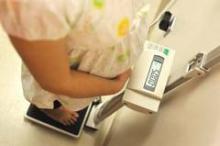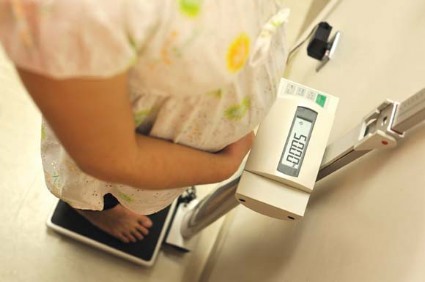User login
SANTA BARBARA, CALIF. – Lower-than-average clinical pregnancy rates among obese women undergoing assisted reproductive techniques may be less relevant clinically than they seem at first blush, according to Dr. Marcelle I. Cedars.
A third of American women today are overweight or obese, she pointed out, and excess weight can translate into pregnancy complications and risks to the fetus.
But actual differences in ART outcomes may not warrant drastic steps, such as denying in vitro fertilization (IVF) treatment for women who are overweight, she argued.
"If you look at the abstracts of all these papers, they list these huge significance factors, but if you’re looking at tens of thousands of cycles, a very small reduction in pregnancy rate is highly, highly significant," said Dr. Cedars, professor of obstetrics, gynecology, and reproductive sciences and director of the division of reproductive endocrinology and infertility at the University of California, San Francisco.
For example, she referenced a national study based on Society for Assisted Reproductive Technology data that documented significantly more cancelled treatment cycles because of a low response rate and increased odds of treatment failure among heavier ART patients (Fertil. Steril. 2011;96:820-5). In that study, the greatest decrements in ART success were among women with BMIs of 50 kg/m2 or higher.
At that BMI (translating into a woman about 5 feet 5 inches tall who weighs more than 300 pounds), pregnancy rates in the SART database averaged 36%, compared with 43% for those with a BMI of 18.5 kg/m2 (about 5 foot 5 and 110 pounds).
For women with BMIs between 30 and 35 kg/m2 (5 foot 5 and 180-210 pounds), the pregnancy rate was 41%, Dr. Cedars reported at a conference on IVF and embryo transfer, sponsored by the University of California, Los Angeles.
This study and others like it have prompted some IVF programs to refuse treatment to women with BMIs of 30 kg/m2 and above, according to Dr. Cedars.
But the disparity in pregnancy rates between women with BMIs of 30 vs. 18.5 is, in fact, about the same as the disparity between Asian women compared with white women following ART, she noted.
"Are you going to refuse to treat Asians because their success rate is lower?" she asked rhetorically.
Obesity factors related to ART success take on less significance in older patients, she noted, "because obviously the strongest driver in your older patients is age.
"Age trumps everything, so if your plan is going to make these women lose weight, the time that might take them if they’re older is going to be way more significant than any potential benefit in terms of weight loss," she said.
Based on small studies, acute weight loss appears to reduce fertilization rates rather than improve the odds of ART success, said Dr. Cedars.
She reported no relevant financial relationships.
SANTA BARBARA, CALIF. – Lower-than-average clinical pregnancy rates among obese women undergoing assisted reproductive techniques may be less relevant clinically than they seem at first blush, according to Dr. Marcelle I. Cedars.
A third of American women today are overweight or obese, she pointed out, and excess weight can translate into pregnancy complications and risks to the fetus.
But actual differences in ART outcomes may not warrant drastic steps, such as denying in vitro fertilization (IVF) treatment for women who are overweight, she argued.
"If you look at the abstracts of all these papers, they list these huge significance factors, but if you’re looking at tens of thousands of cycles, a very small reduction in pregnancy rate is highly, highly significant," said Dr. Cedars, professor of obstetrics, gynecology, and reproductive sciences and director of the division of reproductive endocrinology and infertility at the University of California, San Francisco.
For example, she referenced a national study based on Society for Assisted Reproductive Technology data that documented significantly more cancelled treatment cycles because of a low response rate and increased odds of treatment failure among heavier ART patients (Fertil. Steril. 2011;96:820-5). In that study, the greatest decrements in ART success were among women with BMIs of 50 kg/m2 or higher.
At that BMI (translating into a woman about 5 feet 5 inches tall who weighs more than 300 pounds), pregnancy rates in the SART database averaged 36%, compared with 43% for those with a BMI of 18.5 kg/m2 (about 5 foot 5 and 110 pounds).
For women with BMIs between 30 and 35 kg/m2 (5 foot 5 and 180-210 pounds), the pregnancy rate was 41%, Dr. Cedars reported at a conference on IVF and embryo transfer, sponsored by the University of California, Los Angeles.
This study and others like it have prompted some IVF programs to refuse treatment to women with BMIs of 30 kg/m2 and above, according to Dr. Cedars.
But the disparity in pregnancy rates between women with BMIs of 30 vs. 18.5 is, in fact, about the same as the disparity between Asian women compared with white women following ART, she noted.
"Are you going to refuse to treat Asians because their success rate is lower?" she asked rhetorically.
Obesity factors related to ART success take on less significance in older patients, she noted, "because obviously the strongest driver in your older patients is age.
"Age trumps everything, so if your plan is going to make these women lose weight, the time that might take them if they’re older is going to be way more significant than any potential benefit in terms of weight loss," she said.
Based on small studies, acute weight loss appears to reduce fertilization rates rather than improve the odds of ART success, said Dr. Cedars.
She reported no relevant financial relationships.
SANTA BARBARA, CALIF. – Lower-than-average clinical pregnancy rates among obese women undergoing assisted reproductive techniques may be less relevant clinically than they seem at first blush, according to Dr. Marcelle I. Cedars.
A third of American women today are overweight or obese, she pointed out, and excess weight can translate into pregnancy complications and risks to the fetus.
But actual differences in ART outcomes may not warrant drastic steps, such as denying in vitro fertilization (IVF) treatment for women who are overweight, she argued.
"If you look at the abstracts of all these papers, they list these huge significance factors, but if you’re looking at tens of thousands of cycles, a very small reduction in pregnancy rate is highly, highly significant," said Dr. Cedars, professor of obstetrics, gynecology, and reproductive sciences and director of the division of reproductive endocrinology and infertility at the University of California, San Francisco.
For example, she referenced a national study based on Society for Assisted Reproductive Technology data that documented significantly more cancelled treatment cycles because of a low response rate and increased odds of treatment failure among heavier ART patients (Fertil. Steril. 2011;96:820-5). In that study, the greatest decrements in ART success were among women with BMIs of 50 kg/m2 or higher.
At that BMI (translating into a woman about 5 feet 5 inches tall who weighs more than 300 pounds), pregnancy rates in the SART database averaged 36%, compared with 43% for those with a BMI of 18.5 kg/m2 (about 5 foot 5 and 110 pounds).
For women with BMIs between 30 and 35 kg/m2 (5 foot 5 and 180-210 pounds), the pregnancy rate was 41%, Dr. Cedars reported at a conference on IVF and embryo transfer, sponsored by the University of California, Los Angeles.
This study and others like it have prompted some IVF programs to refuse treatment to women with BMIs of 30 kg/m2 and above, according to Dr. Cedars.
But the disparity in pregnancy rates between women with BMIs of 30 vs. 18.5 is, in fact, about the same as the disparity between Asian women compared with white women following ART, she noted.
"Are you going to refuse to treat Asians because their success rate is lower?" she asked rhetorically.
Obesity factors related to ART success take on less significance in older patients, she noted, "because obviously the strongest driver in your older patients is age.
"Age trumps everything, so if your plan is going to make these women lose weight, the time that might take them if they’re older is going to be way more significant than any potential benefit in terms of weight loss," she said.
Based on small studies, acute weight loss appears to reduce fertilization rates rather than improve the odds of ART success, said Dr. Cedars.
She reported no relevant financial relationships.
EXPERT ANALYSIS FROM A MEETING ON IN VITRO FERTILIZATION AND EMBRYO TRANSFER

